 W
WIn archaeological excavation, a feature is a collection of one or more contexts representing some human non-portable activity, such as a hearth or wall. Features serve as an indication that the area in which they are found has been interfered with in the past, usually by humans.
 W
WThe Ancient Graves are situated near Wahi Pandhi, Johi tehsil, Dadu District, Sindh, Pakistan, on the top of the hills near foothills of Kirthar Mountains Range. These columned graves are constructed with large slabs of stone on ground surface. The graves are open from northern and southern sides. The western and eastern sides of graves are constructed with stone slabs and also the graves are covered from upper side with slabs. The carpse were placed on ground surface in the graves. The bones can be observed in columned graves on ground surfaces in graves. Due to inscribed word "Behdin" on stone of one grave, it is believed that these ancient graves belonged to Zoroastrians. The word behdin means the good religion which is related to Zoroastrianism.
 W
WAn Anglo-Saxon burial mound is an accumulation of earth and stones erected over a grave or crypt during the late sixth and seventh centuries AD in Anglo-Saxon England. These burial mounds are also known as barrows or tumuli.
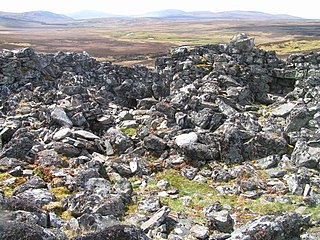 W
WIn archaeology, an Atlantic roundhouse is an Iron Age stone building found in the northern and western parts of mainland Scotland, the Northern Isles and the Hebrides.
 W
WA bedrock mortar (BRM) is an anthropogenic circular depression in a rock outcrop or naturally occurring slab, used by people in the past for grinding of grain, acorns or other food products. There are often a cluster of a considerable number of such holes in proximity indicating that people gathered in groups to conduct food grinding in prehistoric cultures. Correspondingly the alternative name gossip stone is sometimes applied, indicating the social context of the food grinding activity. Typical dimensions of the circular indentations are approximately 12 centimeters in diameter by 10 centimeters deep, although a considerable range of depths of the cavities have been documented. The bedrock mortar has been identified in a number of world regions, but has been particularly intensely documented in the Americas. An alternative term for the bedrock mortar site is bedrock milling station.
 W
WA berm is a level space, shelf, or raised barrier separating areas in a vertical way, especially part-way up a long slope. It can serve as a terrace road, track, path, a fortification line, a border/separation barrier for navigation, good drainage, industry, or other purposes.
 W
WA brick-lined well is a hand-dug water well whose walls are lined with bricks, sometimes called "Dutch bricks" if they are trapezoidal or made on site. The technique is ancient, but is still appropriate in developing countries where labor costs are low and material costs are high.
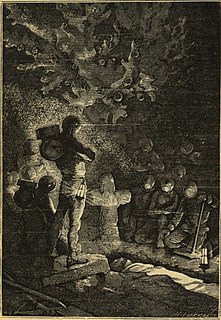 W
WBurial, also known as interment or inhumation, is a method of final disposition whereby a dead body is placed into the ground, sometimes with objects. This is usually accomplished by excavating a pit or trench, placing the deceased and objects in it, and covering it over. A funeral is a ceremony that accompanies the final disposition. Humans have been burying their dead since shortly after the origin of the species. Burial is often seen as indicating respect for the dead. It has been used to prevent the odor of decay, to give family members closure and prevent them from witnessing the decomposition of their loved ones, and in many cultures it has been seen as a necessary step for the deceased to enter the afterlife or to give back to the cycle of life.
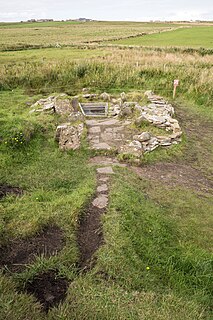 W
WA burnt mound is an archaeological feature consisting of a mound of shattered stones and charcoal, normally with an adjacent hearth and trough. The trough could be rock-cut, wood-lined or clay-lined to ensure it was watertight. Radiocarbon dates vary quite widely, the earliest being late Neolithic, with clusters of dates between 1900–1500 BC and 1200–800 BC, with some outliers in the Iron Age. There are also some dates that go into the early Medieval period. The technology used at burnt mounds has much greater antiquity and is found from the Palaeolithic onwards.
 W
WA cistern is a waterproof receptacle for holding liquids, usually water. Cisterns are often built to catch and store rainwater. Cisterns are distinguished from wells by their waterproof linings. Modern cisterns range in capacity from a few litres to thousands of cubic metres, effectively forming covered reservoirs.
 W
WIn archaeology and archaeological stratification, a cut or truncation is a context that represents a moment in time when other archaeological deposits were removed for the creation of some feature, such as a ditch or pit. In layman's terms, a cut can be thought of as a hole that was dug in the past, though cut also applies to other parts of the archaeological record such as horizontal truncations like terraced ground. A cut context is sometimes referred to as a "negative context", as opposed to a "positive context". The term denotes that a cut has removed material from the archaeological record or natural at the time of its creation, as opposed to a positive context, which adds material to the archaeological record. A cut has zero thickness and no material properties of its own and is defined by the limits of other contexts. Cuts are seen in the record by virtue of the difference between the material it was cut through and the material that back-fills it. This difference is seen as an "edge" by the archaeologists on site. This is shown in the picture, where a half sectioned Saxon pit has had half its backfill removed and we can clearly see a difference between the ground the pit was cut into, and the material originally filling the pit. Sometimes these differences are not clear and an archaeologist must rely on experience and insight to discover cuts.
 W
WDark earth in archaeology is an archaeological horizon, as much as 1 metre (3 ft) thick, indicating settlement over long periods of time. The material is high in organic matter, including charcoal, which gives it its characteristic dark colour; it may also contain fragments of pottery, tile, animal bone and other artefacts. It is interpreted as soil enriched with the sooty remains of thatched roofs from houses without chimneys, with other waste materials. In some areas it appears to give the soil added fertility.
 W
WIn archaeology, earthworks are artificial changes in land level, typically made from piles of artificially placed or sculpted rocks and soil. Earthworks can themselves be archaeological features, or they can show features beneath the surface.
 W
WAn effigy mound is a raised pile of earth built in the shape of a stylized animal, symbol, religious figure, human, or other figure. Effigy mounds were primarily built during the Late Woodland Period.
 W
WIn archaeology, an enclosure is one of the most common types of archaeological site. It is any area of land separated from surrounding land by earthworks, walls or fencing. Such a simple feature is found all over the world and during almost all archaeological periods. They may be few metres across or be large enough to encompass whole cities.
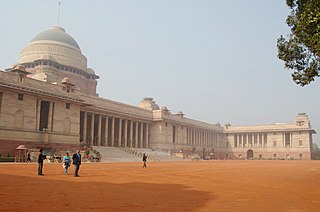 W
WIn architecture, a forecourt is an open area in front of a structure's entrance.
 W
WFoundation deposits are the archaeological remains of the ritual burial of materials under the foundations of buildings.
 W
WA geoglyph is a large design or motif produced on the ground by durable elements of the landscape, such as stones, stone fragments, gravel, or earth. A positive geoglyph is formed by the arrangement and alignment of materials on the ground in a manner akin to petroforms, while a negative geoglyph is formed by removing part of the natural ground surface to create differently coloured or textured ground in a manner akin to petroglyphs.
 W
WA grave is a location where a dead body is buried or interred after a funeral. Graves are usually located in special areas set aside for the purpose of burial, such as graveyards or cemeteries.
 W
WA hearth is the place in a home where a fire is or was traditionally kept for home heating and for cooking, usually constituted by at least a horizontal hearthstone and often enclosed to varying degrees by any combination of reredos, fireplace, oven, smoke hood, or chimney. Hearths are usually composed of masonry such as brick or stone. For centuries, the hearth was such an integral part of a home, usually its central and most important feature, that the concept has been generalized to refer to a homeplace or household, as in the terms "hearth and home" and "keep the home fires burning". In the modern era, since the advent of central heating, hearths are usually less central to most people's daily life because the heating of the home is instead done by a furnace or a heating stove, and cooking is instead done with a kitchen stove with oven plus microwave oven, toaster oven, or other home appliances; thus many homes built in the 20th and 21st centuries do not have hearths. Nonetheless, many homes still have hearths, which still help serve the purposes of warmth, cooking, and comfort.
 W
WThe purpose of a land drain is to allow water in wet or swampy ground to rapidly drain away or to relieve hydrostatic pressure. They are subterranean linear structures which are laid to a fall which should be as steep as practicable. They are used in agriculture and in building construction sites. Modern land drains take the form of a perforated or discontinuous pipe. Typically, the land drains conduct the surplus water to an open ditch or natural water source.
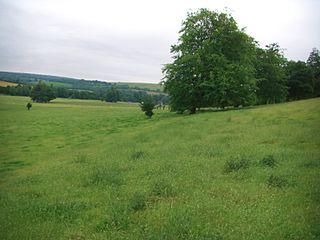 W
WA lynchet or linchet is an earth terrace found on the side of a hill. Lynchets are a feature of ancient field systems of the British Isles. They are commonly found in vertical rows and more commonly referred to as "strip lynchets". Lynchets appear predominantly in Southern Britain and many are in areas close to Iron Age forts and other earthworks, including later Roman earthworks and earlier barrows from the Neolithic and Bronze Age periods. The size, location, spacing and number of rows of many strip lynchets indicates that many were man-made. It is most likely that lynchets were dug to maximise the use of land for agriculture, although they may have had other, ceremonial uses.
 W
WThe naiskos is a small temple in classical order with columns or pillars and pediment.
 W
WPetroforms, also known as boulder outlines or boulder mosaics, are human-made shapes and patterns made by lining up large rocks on the open ground, often on quite level areas. Petroforms in North America were originally made by various Native American and First Nation tribes, who used various terms to describe them. Petroforms can also include a rock cairn or inukshuk, an upright monolith slab, a medicine wheel, a fire pit, a desert kite, sculpted boulders, or simply rocks lined up or stacked for various reasons. Old World petroforms include the Carnac stones and many other megalithic monuments.
 W
WA pit house is a large house in the ground used for shelter. Besides providing shelter from the most extreme of weather conditions, these structures may also be used to store food and for cultural activities like the telling of stories, dancing, singing and celebrations. General dictionaries also describe a pit-house as a dugout, and it has similarities to a half-dugout.
 W
WA platform mound is any earthwork or mound intended to support a structure or activity. It typically refers to a flat-topped mound, whose sides may be pyramidal.
 W
WIn archaeology a posthole or post-hole is a cut feature used to hold a surface timber or stone. They are usually much deeper than they are wide; however, truncation may not make this apparent. Although the remains of the timber may survive, most postholes are mainly recognisable as circular patches of darker earth when viewed in plan. Archaeologists can use their presence to plot the layout of former structures, as the holes may define its corners and sides. Construction using postholes is known as earthfast or post in ground construction.
 W
WA reave is a long and generally straight boundary wall made of stone that was built during the Bronze Age. Reaves were identified as prehistoric features on Dartmoor in Devon, England in 1972, and although they had been described by antiquarians in the 1820s, the knowledge of their origins had been lost, ignored and misrepresented for around 150 years.
 W
WIn Archaeology a Roofbox is a term for a specially contrived opening above a doorway, that is constructed in such way that at particular times of the year e.g. the Winter or Summer Solstices, the Sun would be directly in view from the chamber or passage within.
 W
WShadow marks are a form of archaeological feature visible from the air. Unlike cropmarks, frost marks and soil marks they require upstanding features to work and are therefore more commonly seen in the context of extant sites rather than previously undiscovered buried ones.
 W
WStone box graves were a method of burial used by Native Americans of the Mississippian culture in the American Midwest and Southeast. Their construction was especially common in the Cumberland River Basin, in settlements found around present-day Nashville, Tennessee.
 W
WIn geology, a terrace is a step-like landform. A terrace consists of a flat or gently sloping geomorphic surface, called a tread, that is typically bounded on one side by a steeper ascending slope, which is called a "riser" or "scarp". The tread and the steeper descending slope together constitute the terrace. Terraces can also consist of a tread bounded on all sides by a descending riser or scarp. A narrow terrace is often called a bench.
 W
WA trilithon is a structure consisting of two large vertical stones (posts) supporting a third stone set horizontally across the top (lintel). It is commonly used in the context of megalithic monuments. The most famous trilithons are those of Stonehenge in England, those found in the Megalithic temples of Malta—both of which are UNESCO World Heritage Sites—and the Osireion in Egypt.
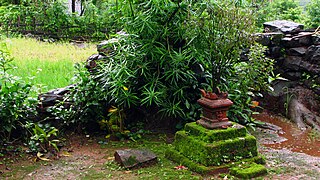 W
WTulasi Chaura, Tulasi Vrindavan, Tulasi Brundavanam or Tulasi Thara is a small podium-like stone or cement construction in front of traditional Hindu houses, housing the sacred Tulasi plant.
 W
WA wall is a structure and a surface that defines an area; carries a load; provides security, shelter, or soundproofing; or, is decorative. There are many kinds of walls, including:Walls in buildings that form a fundamental part of the superstructure or separate interior rooms, sometimes for fire safety Glass walls Border barriers between countries Brick walls Defensive walls in fortifications Permanent, solid fences Retaining walls, which hold back dirt, stone, water, or noise sound Stone walls Walls that protect from oceans (seawalls) or rivers (levees)
 W
WA well is an excavation or structure created in the ground by digging, driving, or drilling to access liquid resources, usually water. The oldest and most common kind of well is a water well, to access groundwater in underground aquifers. The well water is drawn up by a pump, or using containers, such as buckets, that are raised mechanically or by hand. Water can also be injected back into the aquifer through the well. Wells were first constructed at least eight thousand years ago and historically vary in construction from a simple scoop in the sediment of a dry watercourse to the qanats of Iran, and the stepwells and sakiehs of India. Placing a lining in the well shaft helps create stability, and linings of wood or wickerwork date back at least as far as the Iron Age.
 W
W